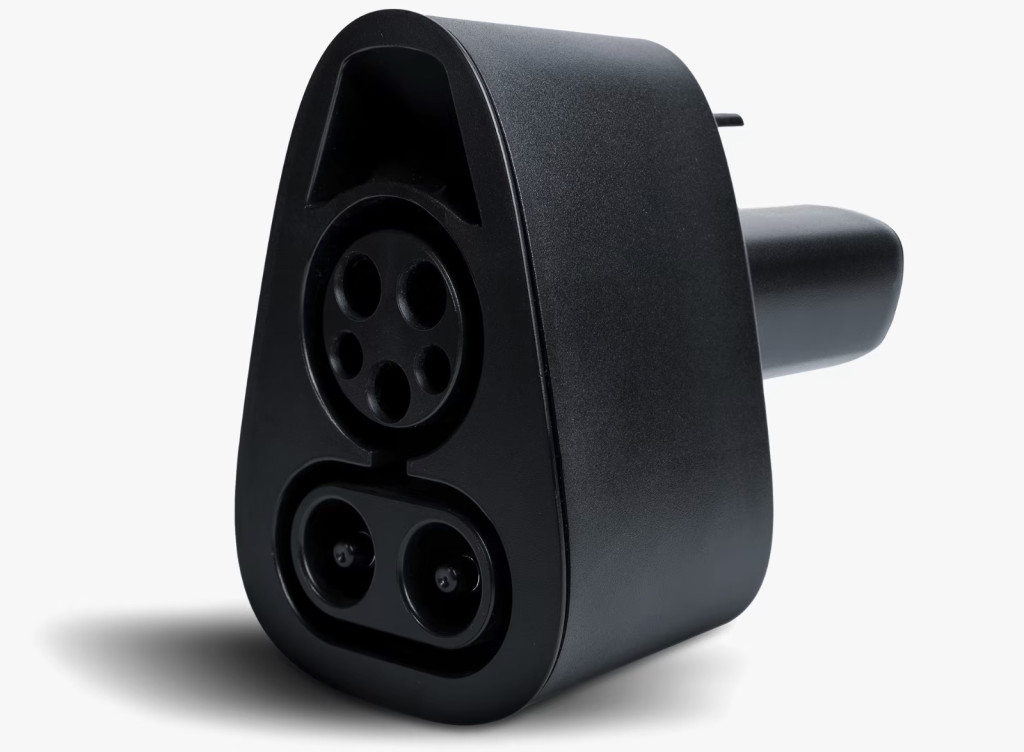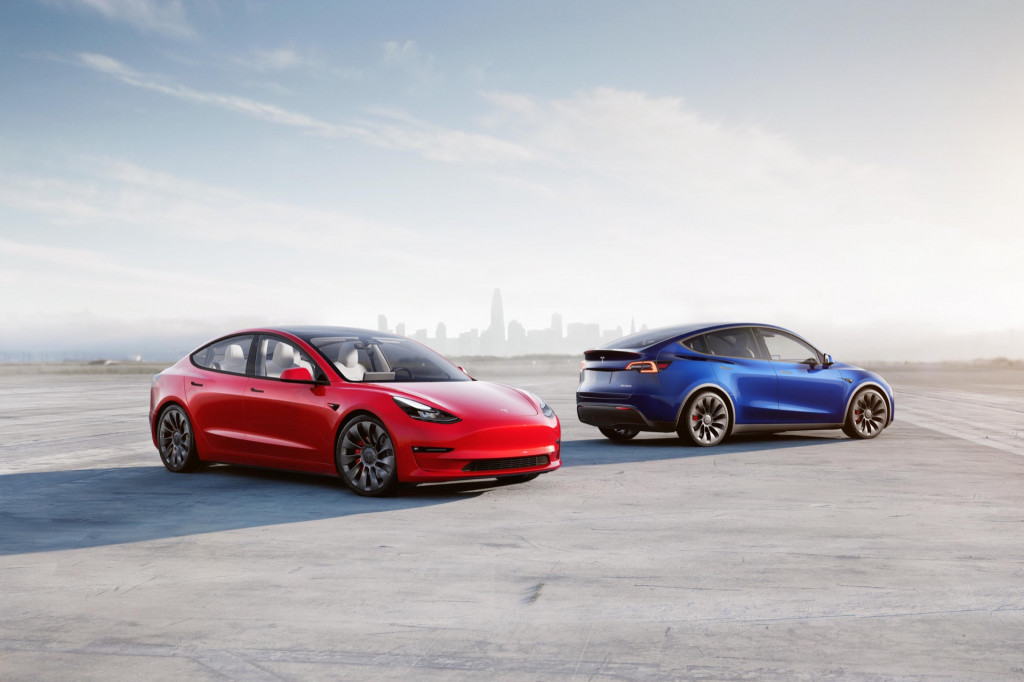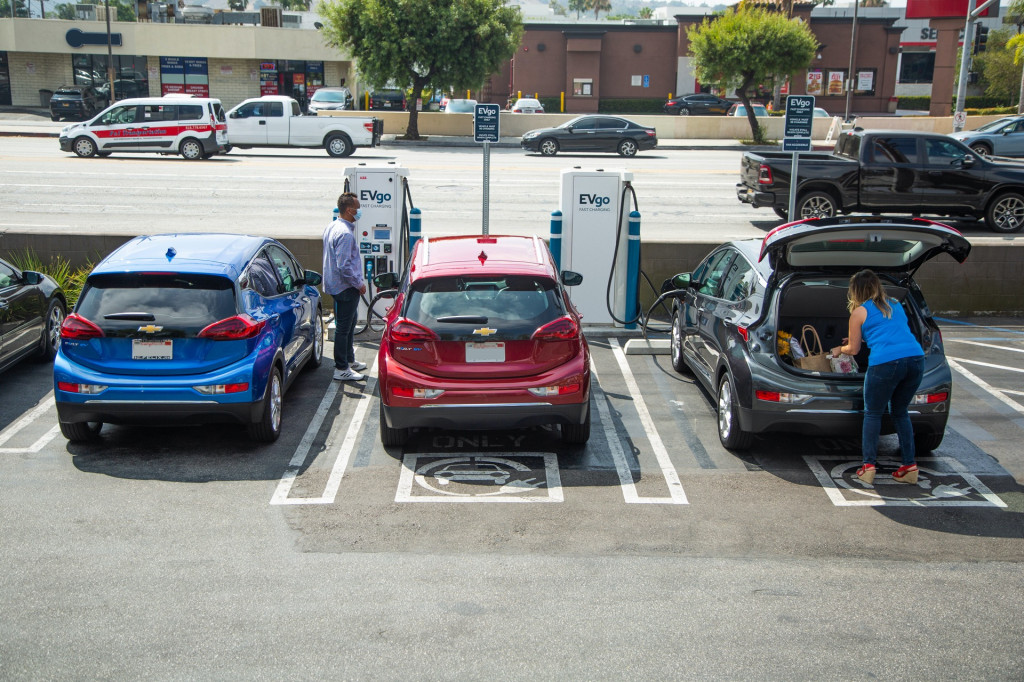Tesla last week finally released a “CCS Combo 1” adapter for the North American market that will enable some recent models from the automaker to be charged at up to 250 kw at third-party stations, such as those from Electrify America or EVgo.
In compatible models, it will allow owners to take advantage of a vast network of fast-chargers in the U.S., allowing better access to cross-country charging than those with any other EV.
For now, compatibility is limited to newer Model 3 and Model Y vehicles plus the Model S and Model X starting with their 2021 refresh. According to Tesla, the adapter will require a retrofit to enable its use for some vehicles, and that retrofit won’t be detailed until early 2023. Owners can sign in to see if their vehicle is compatible.
The company also cautions that charge rates may vary from those advertised by third-party stations, and that Tesla “does not regulate the pricing or charging experience” at them. That’s by and large an experience that only serves to underscore Tesla’s competitive advantage.
“Most third-party stations are not capable of charging Tesla vehicles at 250 kw,” it states outright—essentially setting the bar low and suggesting that the adapter might not deliver near the peak 250 kw even at increasingly common 350-kw charging stations.

Tesla CCS1 adapter for North America

Tesla CCS1 adapter for North America
Use of the adapter is simple enough. The adapter must first be attached into the end of the charging station’s connector, then the adapted Tesla connector is plugged into the vehicle, waiting for it to latch the adapter in place before following any on-screen instructions to initiate charging.
Tesla vehicles are not, of course, compatible with the Plug and Charge functionality allowing some CCS cars to be automatically identified for billing. That will mean Tesla owners will need to initiate a charge with screen prompts, an app, and/or credit-card swipes.
The experience at CCS stations might get better over time, too. “Although the CCS Combo 1 Adapter is designed to work with all CCS 1 charging stations, it may be incompatible with some,” Tesla also states, noting that occasional software updates may affect—and perhaps improve—charging with the adapter.

2022 Tesla lineup (Courtesy of Tesla, Inc.)
Starting with the Tesla Model 3’s arrival in Europe in early 2019, every Tesla has included a CCS charge port for that market, enabled with a different module behind the charging receptacle. Around the same time, Tesla started offering a CCS adapter for Model S and Model X vehicles.
Tesla has offered a CHAdeMO fast-charging adapter for the Model S and Model X for nearly a decade, and it opened access to CHAdeMO charging with an adapter for the Model 3 in 2019—a unit that also still applies to the Model Y.
That’s great news for Tesla owners who are less interested in taking a long road trip but simply need an extra 100 miles or more for weekend errands. Although Tesla’s Supercharger network is unrivaled for highway-trip consistency and performance, CCS has it beat in terms of close-in metro-area locations. With Tesla’s decision starting earlier this year to no longer include a mobile charger with its vehicles, more owners may be seeking CCS as a stopgap in some situations.

GM and EVgo expand major-metro fast charging
According to the U.S. Department of Energy, in data regularly updated, there are currently 1,496 U.S. Tesla Supercharger network locations, including 15,339 fast-charging connectors. To compare, there are 4,491 locations offering CCS fast-charging, including 8,986 connectors.
Tesla has long suggested that it will make the Supercharger network available to those with vehicles of other brands with a CCS adapter—with likely surcharges for slow-charging non-Tesla EVs. Although it’s tested and enabled the idea with a pilot applying to other markets including Norway, the UK, and much of Europe, it hasn’t yet come to the U.S.













